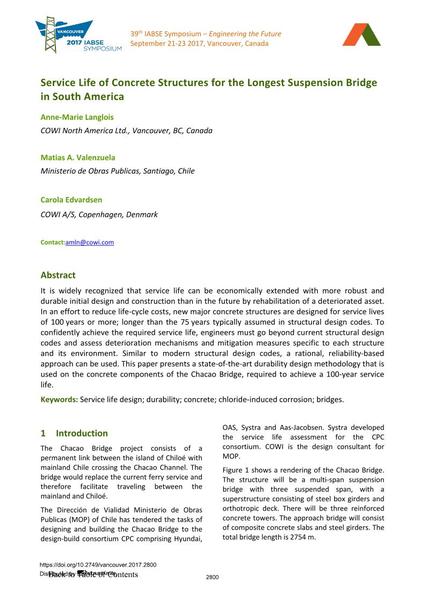Service Life of Concrete Structures for the Longest Suspension Bridge in South America

|
|
|||||||||||
Détails bibliographiques
| Auteur(s): |
Anne-Marie Langlois
(COWI North America Ltd., Vancouver, BC, Canada)
Matías A. Valenzuela (Ministerio de Obras Publicas, Santiago, Chile) Carola Edvardsen (COWI A/S, Copenhagen, Denmark) |
||||
|---|---|---|---|---|---|
| Médium: | papier de conférence | ||||
| Langue(s): | anglais | ||||
| Conférence: | IABSE Symposium: Engineering the Future, Vancouver, Canada, 21-23 September 2017 | ||||
| Publié dans: | IABSE Symposium Vancouver 2017 | ||||
|
|||||
| Page(s): | 2800-2807 | ||||
| Nombre total de pages (du PDF): | 8 | ||||
| Année: | 2017 | ||||
| DOI: | 10.2749/vancouver.2017.2800 | ||||
| Abstrait: |
It is widely recognized that service life can be economically extended with more robust and durable initial design and construction than in the future by rehabilitation of a deteriorated asset. In an effort to reduce life-cycle costs, new major concrete structures are designed for service lives of 100 years or more; longer than the 75 years typically assumed in structural design codes. To confidently achieve the required service life, engineers must go beyond current structural design codes and assess deterioration mechanisms and mitigation measures specific to each structure and its environment. Similar to modern structural design codes, a rational, reliability-based approach can be used. This paper presents a state-of-the-art durability design methodology that is used on the concrete components of the Chacao Bridge, required to achieve a 100-year service life. |
||||
| Mots-clé: |
béton ponts
|
||||

